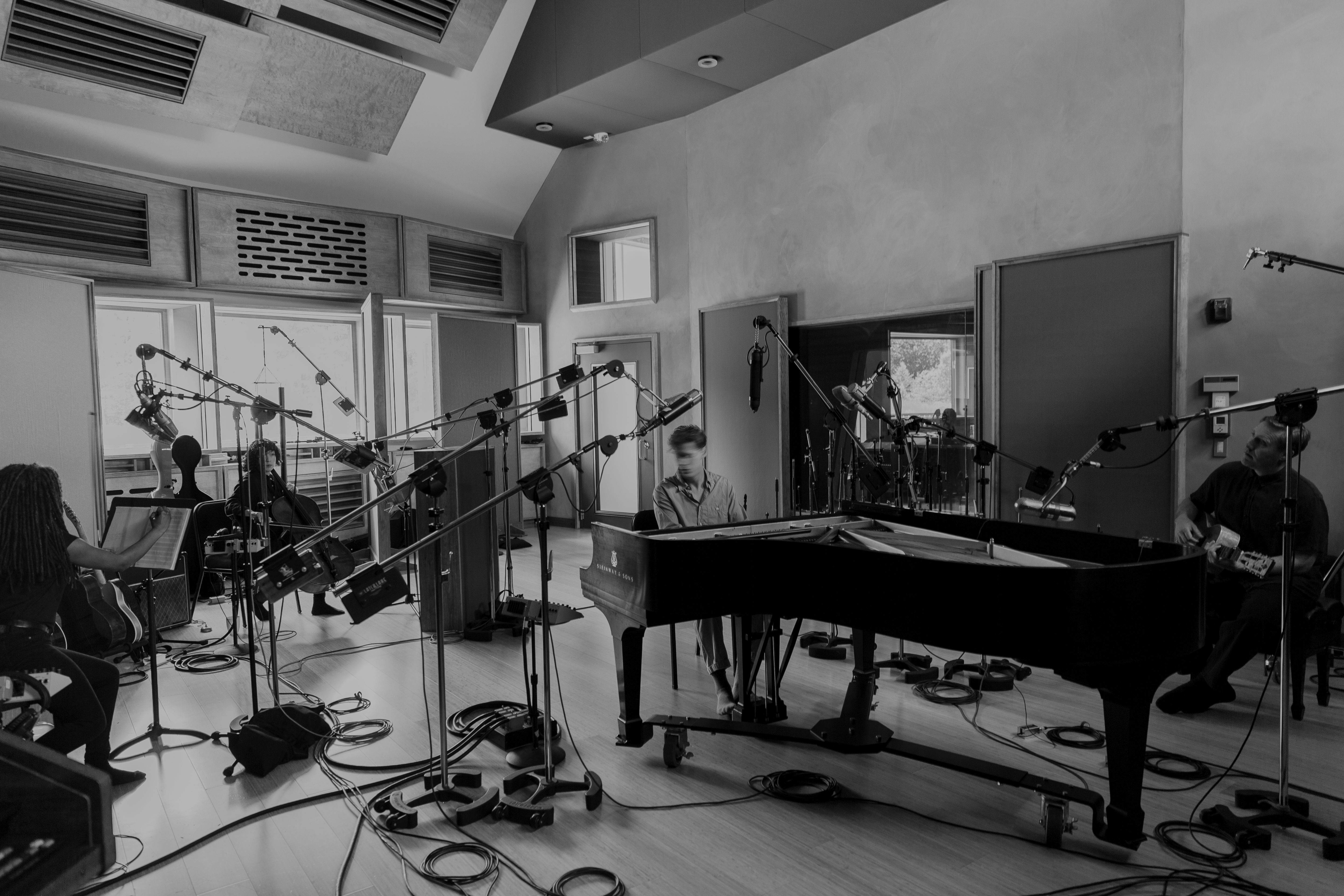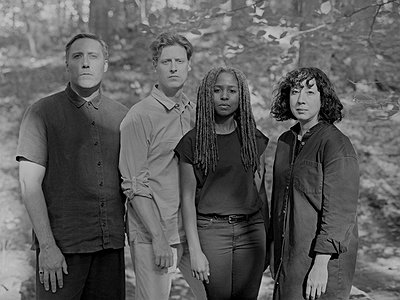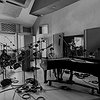Name: Balmorhea
Members: Rob Lowe, Michael Muller
Interviewee: Rob Lowe
Nationality: American
Occupation: Composers, instrumentalists
Current Release: Balmorhea's new album Pendant World, featuring Clarice Jensen and Aisha Burns, is out now on Deutsche Grammophon.
[Read our Clarice Jensen interview]
[Read our Clarice Jensen interview about the cello]
If you enjoyed these thoughts by Balmorhea and would like to find out more about the band and their work visit their official website for more information. They are also on Instagram, Facebook, and twitter.
Balmorhea have also participated in the 15 Questions series several times over the years. There is a Michael A. Muller interview, a previous 15 Questions with Balmorhea interview as well as a piece by the band on Environmentalism/Activism in music.
I recently watched a video by your friend Norman Maslov talking about your new album on DG. He used the word minimalism a lot with regards to your music, which I hadn't thought of before, but did make sense to me. From your perspective as creators, do you find the term minimalism useful in music, do you find it useful for your music specifically?
I think miminalism is often used as shorthand for any music that allows a listener space. We have many compositions that use a “minimal” number of notes or find their way by relishing the space or atmosphere of a chord or phrase, but our music has basically zero to do with the academic movement of minimalism.
I think we are inspired by a lot of music from that school and perhaps have absorbed some aesthetic themes from that music, but don’t consider ourselves minimalist artists by any means. So is it useful? Yes/No.
Is less really more when it comes to music?
Depends on the moment. No fixed rules — for example, hold in your mind Bitches Brew and William Basinski's The Disintegration Loops.
[Read our William Basinski interview]
When we did our very first interview (for tokafi) all the way back in 2008, you spoke about your influences and artists/composers like Max Richter, Arvo Pärt, and Ludovico Einaudi, which point into this minimalist direction. But your lists also included Beethoven, Morrissey, and, for you Rob, "the sounds that surround me all day and night." How did and do these inspirations, as well as more recent ones not included here, get chanelled into your music, do you feel?
It’s all there! I often feel as if I have no choice about what turns me on, about what I want to copy or reject or what snakes its way into my music without me knowing.
But there are sometimes moments in life, I’m sure you can agree, where a sound or an image or a phrase or the tone of the light in the evening will simply take hold of your consciousness and demand attention. It’s those moments that become music. And the moments of sheer terror at what it means to be living.
For this album I tried to be more attentive, I’m always trying to be more attentive.
[Read our Ludovico Einaudi interview]
[Read our Max Richter interview]
The reason why I don't particularly find the term minimalism applicable for your music is that I never feel like you're subtracting something or withholding anything from the listener. I do, however, find that silence and space are important aspects in your music – can you briefly discuss them and their role for an album like Pendant World?
Agree. I think the key for us, as you mention, is space. Music is a mysterious message transmitted from one to another. I can transmit this message from myself to myself, which is where all these ideas begin.
But there is always the idea that there would be another person receiving that message, gaining an understanding about how I feel or experience the world. At our most aspirational we aim to always make sure that we are including this other participant in the process, not lecturing or teaching, but including and welcoming: making space.
To me, Pendant World is still recognisably “Balmorhean,” but it's also surprising in its tone, its harmonic language, its sound, and even in the way that the pieces seem to gel together into one long suite. It really seems like the beginning of something new.
Looking back at Pendant World, I am struck actually at how in-relationship it is to our previous album, The Wind.
You are correct to detect a much different tone, it’s more muscular and large, but musically there are many ideas from The Wind that found a second life on Pendant World. I have started thinking of them as two parts of a whole. And even started thinking of this as the middle chapter in a larger series of compositions. But who knows!
I think it is strange to be able to stay in a band for as long as we have (17 years!), it is strange to be able to look back at the work you made when you were young and need to be able to hold that up as part of the larger whole that we are creating. It is humbling.
Most people can move through life with scant reminders of how they felt or saw or experienced the world when they were 22. But for us our work demands that we stay connected to that version of ourselves.
Tell me about the journey you've been on over the past 20 years and where you feel it's taken you.
It is such a pleasure to be able to feel like we are progressing — whether it is technically or musically or aesthetically or whatever — but always trying to say something new and honest and true to who we are in the moment we find ourselves.
Today, would you say it has it become easier or harder to come up with ideas for Balmorhea?
Much harder.
For the two albums prior to signing with DG, you needed longer times for reflection. How do you look back on those years and how taking a step back influenced the project and the creative process?
Michael and I both brushed pretty close up against some burnout during those years and decided that we needed to be able to pursue some alternate musical projects, which we did.
People change a lot during their 30s and it’s a difficult thing to maintain a creative partnership as close as him and I’s. The space that we discovered for ourselves helped open up now territory for Balmorhea and I am grateful for those years.
Since The Wind, there is suddenly a fresh drive to create. Where does that come from?
Well, the pandemic basically eliminated any chance that we had at taking the music from The Wind on tour, so I guess we just immediately started working on Pendant World. Lots of time at home to play the piano and guitar.
Don’t know where it comes from, sometimes the drive is there sometimes it is not, but I suspect a lot of free time to sit at an instrument doesn’t hurt.
For this album especially, you returned to making music in the same room together, both as a duo and with the guest musicians. Maybe using examples from some of the pieces you wrote during this time, how does that experience compare to a process where composition took place further apart – and how did it influence the results?
On our album Stranger, for example, the music was written in a very disjointed and cross-country-continent manner. We recorded it in a number of different places and it was pieced together. I think it was the first time we had really used the studio as a bigger charter in our albums, previously they had been created mostly live in studio spaces.
I think because we were young, we had not fully recognized how important it is to be musical together and thought that we could simply layer it all up to greater effect. I think now that we have been doing this for a bit longer we understand that no matter how incredible the studio or how expensive the microphones, the thing that truly matters is the human expression and that everything else should line up in service of that.
Those technical things are important and can really set you up to communicate well, but they are no replacement. So I think we just trust our ears more now.
In a previous 15 Questions interview, you mentioned: “Ultimately what we are looking to communicate has very little to do with technology so in our process we are looking for ways for the technology to disappear.” What does that mean, concretely – and did it still apply today and to the new music?
I think it goes to the previous conversation about space. We don’t want people to feel on the outside looking in like wow how impressive or technical or cool, we want people feeling like there are right there with us.
Minimalist or not, Balmorhea is a project where I feel even small changes can have a big impact and potentially take you too far away from your intentions. How comfortable were you letting others in on Pendant World?
Felt nothing but excitement and pride letting people in on this music!
I think the main fear that we have is that people will listen and just think that it’s boring or regurgitated or uninspired (which plenty of people will I guess). But we would rather offer something that is more fresh or surprising than something rehashed or stale.
Briefly describe the recording and composing process for the album, please.
Mike and I wrote the songs mostly during the years 2020 and 2021, often times traveling long distances by car to be in the same place to work. We would meet at various rural locations in Texas to combine what we had been creating. It was some of the only trips that we allowed ourselves during the heavy pandemic years.
We made the primary recordings (all instruments and processing save Sam Gendel, Joseph Shabason) at the idilic Guilford Sound in Southern Vermont with our good friend / mensch Jonathan Low at the controls. We hiked an eighth of a mile through pristine maple forest each morning and evening to get to and from the living quarters and studio. That was about 10 days. 
Then we took about 5 days off and hung out in New York City and Hudson, our families came to join us for this interlude. Then Jon mixed it outside Hudson NY at the famous Long Pond studio. Then we spent about 10 months arguing about what we would name everything haha.
I read that there tend to be lots of disagreement in your process which came as a surprise. What are they about?
Mostly about small things. The big arches of albums and musical ideas and concepts we tend to sync up on pretty easily. It’s in the details like what is an appropriate name or image to represent a song. Or just a detail about a recording.
Is composing “fun” - should it be?
The process is just as much fun as it is difficult, both in equal measure and sometimes careening quickly from one to the other and back again.
Michael and I both care about what we do very much and I think there-in lies the potential for conflict. We both will not relent until we have been convinced of the merits of a decision.
Your artworks have always incredible and an essential part of the project. Pendant World is no exception in this regard. Tell me about that relationship, please, and the choice for cover motive on Pendant World.
Yes, we had been going around and around and around trying to discover an image to represent the album. But kind of like musical ideas, these images often present themselves. This one just came across our field of vision on instagram by a photographer named Dylan Hausthor. It immediately felt both succinct and layered and just stuck immediately. We inquired with him about where the image was made and received this response:
"I made it last autumn on Martha's Vineyard, where I was farming and teaching for the summer, on a part of the island that I love. Outside of Chilmark. It's a part of the island that is astoundingly and uniquely beautiful—and where there is a strange mix of local farmers barely making enough money to keep feeding some of the wealthy people in the world who live there for a few months in the summer. The island also rests off the coast of Massachusetts in a tropical microclimate, which allows for simultaneous extreme growth of plants that don't grow anywhere else in New England, but also allow for erratic weather that will bury much of the island underwater in less than 100 years. It's a place of extremes, both highs, and lows. I worked on a farm there, and the growth on that island really inspired my work, looking for extremes in nature. This web, to me, feels like a glorified rendering of a net that—if it's as successful as the nets that the Vineyard's fisherman use to find baitfish—will sustain a spider for a long time among the extreme wealth and poverty on the misty stolen land of Chilmark."
Once we received this message with the themes of beauty and terror and paradox we knew that it was made in symbiosis with what we had been making. It was an easy choice at that point.
Within certain limits, Balmorhea has been extremely exploratory. One constant, however, has been the non verbal nature of your music. Coming back to your influences – even Beethoven eventually wrote a choir into his symphonies. What, to you, is the power of instrumental music?
There is more space there.





